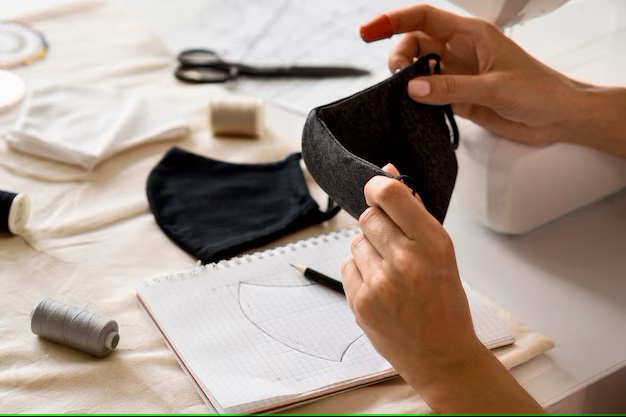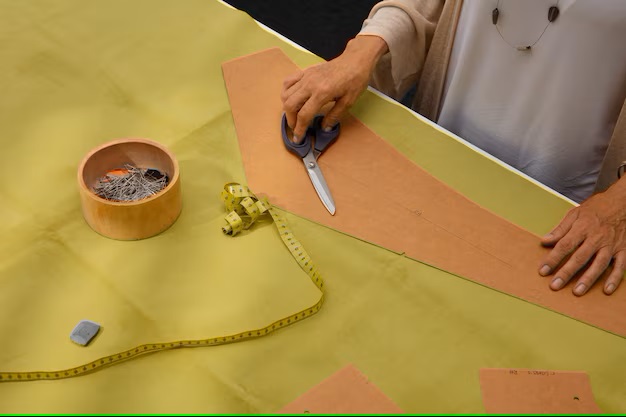Essential Beginner Tips for Sewing Your Own Swimwear
Creating custom beachwear can be an exciting and fulfilling journey that allows you to embrace your creativity while enjoying the sun and surf. Whether you’re looking to make a stylish bikini or a chic one-piece, diving into this artistic endeavor opens up a world where fabric meets functionality. With the right amount of enthusiasm and a few guiding principles, you can craft pieces that not only fit perfectly but also reflect your unique style.
Embarking on this project may seem daunting at first, but with a little preparation and insight, success is well within reach. Understanding the qualities of various materials and the nuances of design will empower you to bring your vision to life. Moreover, familiarizing yourself with indispensable techniques will enhance your capabilities and confidence throughout the creation process.
As you begin to explore this exciting craft, remember that patience and practice are key. Embrace the trials and triumphs of each project, and don’t hesitate to learn from any missteps along the way. With determination and enjoyment, your creations will not only serve as fashionable swimwear but also as a testament to your burgeoning skills and artistic expression.
Choosing the Right Fabric for Swimwear
When creating swim attire, selecting the appropriate textile is crucial to achieving comfort, fit, and durability. The right material should not only complement your design vision but also withstand the elements of water and sun exposure, ensuring both functionality and style.
Look for fabrics that possess excellent stretch and recovery properties, allowing for freedom of movement and ensuring a flattering silhouette. Materials such as Lycra or Spandex blends are popular choices, as they provide the elasticity needed for active wear while retaining their shape over time.
It’s also important to consider the weight and thickness of the fabric. Lightweight options often dry quickly and feel comfortable against the skin, while thicker textiles can offer additional support and coverage. Additionally, opt for fabrics that are resistant to chlorine and UV rays to extend the lifespan of your creation.
Lastly, do not overlook the aesthetic aspects. Vibrant colors, fun patterns, and unique textures can elevate your design, making you stand out while enjoying the water. Think about your personal style and how it can be reflected in the chosen material, ensuring your garment is both practical and visually appealing.
Essential Tools for Sewing Beginners
Having the right equipment is crucial for creating beautiful projects. Each item in your toolkit serves a purpose, enhancing the overall experience and making the process smoother. From the very beginning, investing in quality tools can significantly impact your comfort and efficiency while working on various fabric types.
Must-Have Items
| Tool | Description |
|---|---|
| Fabric Scissors | High-quality scissors specifically designed for cutting fabric, ensuring clean edges and precision. |
| Measuring Tape | A flexible tape measure that helps achieve accurate measurements for pattern adjustments and fitting. |
| Seam Ripper | A handy tool for correcting mistakes, allowing the seamless removal of stitches without damaging the fabric. |
| Pin Cushion | A cushion for storing pins safely, preventing loss and ensuring ease of access during the crafting process. |
| Chalk or Fabric Marker | Writing utensils used for marking fabric, helping to guide cutting and sewing lines accurately. |
Optional Accessories
While the primary tools are vital, additional items can enhance your craft. Items such as rotary cutters, cutting mats, and specialized rulers may offer more versatility and precision. As you progress in your journey, consider incorporating more options to expand your capabilities and improve your projects.
Understanding Swimwear Patterns and Designs
Creating swimwear involves an intricate dance between aesthetics and function. It’s essential to grasp the various styles and silhouettes that can make a striking impact while ensuring comfort and practicality. From the cut of the suit to its decorative elements, each aspect plays a crucial role in designing the perfect piece suitable for sun-soaked adventures or lazy poolside lounging.
Exploring Different Styles
Swimwear encompasses a multitude of styles, including bikinis, one-piece suits, and tankinis, each offering unique advantages depending on body types and personal preferences. Bikinis, with their two-piece configuration, allow for versatile mixing and matching, while one-pieces can provide additional support and coverage. A tankini, combining elements from both styles, offers a playful option that balances modesty with flair. Understanding these variations assists in selecting a pattern that aligns with individual taste.
Fabric Choice and Pattern Design
The material used in swimwear greatly influences its design and overall performance. Fabrics like Lycra, spandex, and polyester provide the necessary stretch and durability for aquatic activities. When choosing a pattern, take fabric characteristics into account, as they will affect how the garment will drape and fit. Additionally, bold prints and vibrant colors can elevate a design, but it’s crucial to consider how the chosen pattern complements the body shape and style preferences.
Tips for Assembling Your Swimwear Pieces
Successfully bringing together various components of your beachwear can significantly influence its overall appearance and functionality. Understanding the nuances of this process will lead to a more polished final product, ensuring that each element works harmoniously with the others.
Choosing the Right Stitch
When it comes to connecting fabric sections, selecting an appropriate stitch type is crucial. For stretchy materials, a zigzag stitch or a serger is highly recommended. These methods allow for flexibility and prevent fabric from ripping when pulled or worn. For reinforced seams, consider a combination of straight and zigzag stitches, which will provide added durability.
Pinning and Fitting
Before making permanent attachments, it is wise to pin your pieces together for accurate fitting. This temporary hold allows you to evaluate comfort and adjust for any irregularities in size or shape. Make sure to use ballpoint pins specifically designed for knit fabrics to avoid damaging the material.
How to Make Accurate Measurements
Obtaining precise measurements is crucial when creating custom garments, as it ensures the perfect fit and comfort. Understanding the right techniques and tools involved in this process can significantly improve the final outcome of your project. Accurate measurements provide a solid foundation upon which to build your garment design.
Gathering Necessary Tools
Before commencing the measurement process, it is important to gather the right equipment. Here are the key items you will need:
| Tool | Purpose |
|---|---|
| Measuring Tape | To take body measurements accurately. |
| Tailor’s Chalk | For marking measurements on fabric. |
| Notepad | To record measurements for future reference. |
| Ruler | To ensure straight lines when marking. |
Taking Measurements Step-by-Step
Follow these steps to ensure your measurements are as precise as possible:
- Wear minimal, form-fitting clothing, or measure over undergarments to avoid any bulk that may affect accuracy.
- Have someone assist you in taking the measurements. This helps ensure you get the most exact results.
- Measure key areas: bust, waist, hips, torso length, and inseam. Always ensure the tape is parallel to the floor and snug but not tight.
- Repeat each measurement two to three times to ensure consistency, and record them promptly to avoid confusion.
With attention to detail and proper techniques, capturing accurate measurements can enhance your sewing experience and lead to well-fitting creations.
Finishing Techniques for a Professional Look
Achieving a polished appearance in your fabric creations greatly depends on the finishing processes you employ. High-quality edging and consistent seams not only enhance the garment’s aesthetic but also improve its durability. Mastering various methods can elevate your project and make it stand out.
Popular Finishing Methods
Several techniques are widely recognized for their effectiveness in giving garments a refined touch. Below is a summary of common options with brief descriptions:
| Technique | Description |
|---|---|
| Overlocking | Utilizes an overlock machine to trim and encase the raw edges, preventing fraying. |
| Zigzag Stitching | A versatile method employing a zigzag stitch to secure edges, ideal for stretch fabrics. |
| Bias Binding | Attaches fabric strips along the edges for a neat finish, enhancing visual appeal. |
| Folded Hem | A simple turn-under technique that creates a clean edge without additional materials. |
Choosing the Right Technique
Selecting the proper finishing approach largely depends on the fabric type and intended use of the garment. Consider the stretch and drape of the material, as well as the overall design, to ensure functionality and style seamlessly merge in your finished creation.
Q&A: Beginner tips for sewing swimwear
What materials do I need to start sewing my own swimwear?
To begin sewing your own swimwear, you’ll need a few essential materials. First, choose a high-quality swimsuit fabric, such as lycra or spandex, which offers stretch and comfort. Additionally, you’ll require a matching thread that is compatible with stretch fabrics. Make sure to have a rotary cutter or sharp fabric scissors for clean cuts. It’s also important to have a sewing machine equipped with a ballpoint needle specifically designed for knits, as well as clips or pins to hold the fabric in place while you sew. Lastly, you may want to include elastic for a secure fit and optional lining fabric for added coverage.
What are the basic sewing techniques I should learn before starting my swimwear project?
Before diving into your swimwear project, it’s helpful to familiarize yourself with a few basic sewing techniques. Start with understanding how to sew straight seams, as they form the foundation of most swimwear construction. Learn about using a zigzag stitch or a stretch stitch to allow the seams to stretch without breaking. Additionally, practice attaching elastic, which is crucial for a snug fit. If you’re feeling adventurous, you can also explore techniques like gathering fabric and sewing hems with a narrow hem finish for a polished look. Mastering these skills will set you up for success in creating stylish and functional swimwear.
How can I ensure that my swimwear fits properly?
To achieve a proper fit for your swimwear, it’s essential to take accurate measurements before you begin sewing. Measure your bust, waist, hips, and inseam to guide your pattern selection or drafting. If you’re using a commercial pattern, refer to its sizing chart and consider the ease factor for swimwear. A good practice is to create a muslin (a test garment) to test the fit before using your final fabric. Also, during construction, try on the garment frequently and make adjustments as necessary, such as altering straps or adjusting the rise. This proactive approach helps ensure that your swimwear is both comfortable and flattering when finished.
What are some common mistakes beginners make when sewing swimwear, and how can I avoid them?
Common mistakes beginners often make when sewing swimwear include using the wrong type of fabric, which can lead to an uncomfortable or poor-fitting suit. To avoid this, always choose fabrics specifically designed for swimwear, like lycra or spandex. Another mistake is not properly adjusting the tension settings on the sewing machine, which can cause puckering or loose seams. Make sure to test stitching on scrap fabric before you start your project. Also, beginners might overlook the importance of using elastic correctly, leading to a swimsuit that doesn’t stay in place. Take the time to properly measure and attach elastic to ensure a secure fit. Lastly, many underestimate the importance of taking breaks and not rushing through the process—taking your time will result in a much better final product.
Can I repurpose old clothing into swimwear, and if so, how?
Yes, you can definitely repurpose old clothing into swimwear, but it’s important to keep a few factors in mind. Look for items made from suitable stretchy materials, like old athletic wear or even fitted t-shirts. Start by disassembling the donated pieces, focusing on areas that have enough quantity of fabric for your new swimwear project. Check for any fabric damage or fading that might affect the look and durability of your swimsuit. When cutting out your patterns, ensure that the stretch of the fabric aligns with your swimwear design. Remember, the key is to keep the structural integrity of the swimwear, so you may want to add new elastic or lining for support. This creative approach not only saves money but is also eco-friendly!
What type of swimwear fabric is best for making a swimsuit?
Swimwear fabric with 4-way stretch, such as nylon or spandex blends, is best for making a swimsuit because it provides the necessary stretch, durability, and comfort for both chlorine and salt water environments.
What is the purpose of using swimwear elastic?
Swimwear elastic, specifically rubber elastic, is used to provide support and stability in areas like the waistband, leg openings, and straps of a swimsuit, ensuring a snug fit and preventing the fabric from losing shape when exposed to water.
How do you prevent skipped stitches when sewing a swimsuit?
To prevent skipped stitches when sewing a swimsuit, use a stretch needle and polyester thread, as these are specifically designed to handle the slippery nature of swimwear fabric and provide flexibility with the stretch of the material.
What are tips for cutting slippery swimwear fabric?
When cutting slippery swim fabric, use pattern weights instead of pins to secure the fabric. This ensures the fabric stays flat and in place. Additionally, make cutting less difficult by using a rotary cutter for precision.
How do you add extra stretch to your swimsuit seams?
To add extra stretch to your swimsuit seams, use a lightning bolt stitch or a zigzag stitch on a regular sewing machine. This ensures that the seams can stretch along with the fabric without breaking or becoming distorted.
What is negative ease, and why is it important in swimsuit patterns?
Negative ease refers to the concept of the garment being smaller than the body measurements to create a tight fit. This is important in swimsuit patterns to ensure that the bathing suit clings to the body and doesn’t sag when wet.
What are the best sewing tips for lining a swimsuit?
When lining your swimsuit, choose a swimwear lining that has 4-way stretch to match the main swimsuit fabric. This adds support, coverage, and comfort while ensuring the swimsuit retains its shape in water.
Can you use a regular sewing machine to sew swimwear?
Yes, a regular sewing machine can be used to sew swimwear. Make sure you’re using a stretch needle, polyester thread, and a lightning bolt stitch to handle the stretch and slippery nature of the swim fabric.
How do you ensure your swimsuit is comfortable to wear?
To ensure your swimsuit is comfortable to wear, use swimwear notions such as swimwear elastic, a lining that adds support, and soft, stretchy fabrics like nylon that provide both flexibility and a smooth feel on the skin.
What should you know about sewing with swim fabric?
When sewing with swim fabric, it’s important to remember that the fabric doesn’t fray, so seam finishes are less crucial. Additionally, swimwear fabric is often slippery, so using pattern weights and a rotary cutter can help achieve accurate cuts.
Why is seam allowance important when sewing a swimsuit?
Seam allowance is important in swimsuit sewing because swim fabrics require precise allowances to maintain the garment’s shape and fit, especially with negative ease. Proper seam allowances prevent distortion of the final shape of the swimsuit.
What swimwear notions are essential for making your own swimsuit?
Essential swimwear notions include swimwear elastic, nylon thread or polyester thread, and a stretch needle. These tools provide the necessary durability and stretch for swim fabrics and ensure that the swimsuit retains its shape and elasticity over time.
What is the role of a serger in sewing swimwear?
Using a serger or overlocker when sewing swimwear provides a strong, clean finish to seams while allowing the necessary stretch. A serger also prevents the fabric from bunching or stretching unevenly during the sewing process.
Why is lining your swimsuit important?
Lining your swimsuit is important because it adds support, prevents the main fabric from becoming transparent when wet, and provides comfort against the skin. Swimwear lining also helps the swimsuit maintain its shape over time.
What are common sewing patterns for making swimsuits?
Common swimsuit sewing patterns include styles with negative ease, such as one-pieces, bikinis, and tankinis. These patterns often include detailed instructions for using swim fabric, lining, and swimwear elastic to create a professional-looking bathing suit.



